
Installing trim can give your home a finished, polished appearance. Learn how much it costs to install trim and what factors affect how much you’ll pay.
Timeless, classic appeal, but install crown molding only if you love it


Home Value Rating: 1/5
Installing crown molding costs $4 to $50 per linear foot.
Crown molding installation does not have an exact ROI, but it can add aesthetic value to a home.
Coupling crown molding installation with other updating projects can increase the project's value.
Installing crown molding in your home can have positive effects in terms of style, elegance, and selling appeal, especially when coupled with other upgrades. However, putting up crown molding alone won't increase your home's value by any significant dollar amount. That said, upgrading your living room is an excellent example of a home improvement project that can increase home value with an ROI of up to 53%. Adding crown molding, which costs $4 to $50 per linear foot, can help increase that percentage slightly.
The fact that crown molding by itself doesn't add significant value to the home makes it challenging to determine if adding the task to another remodeling project is the right thing to do. The simple answer is, if you love it, add it. While crown molding can help hide wall defects, its primary modern purpose is to add style and a sense of luxury to a room or home. That said, crown molding needs proper installation to be of any value at all. Several factors will determine the cost and value of your crown molding installation.
The rooms you choose to install crown molding in won't matter in terms of project cost. However, certain rooms will benefit more in the way of selling appeal and value than others. For the best ROI opportunities, consider installing crown molding in the following rooms:
Primary bedroom
Bathroom(s)
Kitchen
Living room
Dining room
Home theater
Bedrooms, rec rooms, and other utility-type rooms can be left off the list. On the other hand, rooms with high ceilings and elaborate trim work can benefit significantly from the addition of crown molding.
An excellent consideration could be installing crown molding slightly below the ceiling in your home theater space and tucking LED strip lighting above it to create mood and accent lighting.
Crown molding is available in almost unlimited profiles and nearly as many sizes, ranging from a few inches to over two feet tall. The size of molding you choose will impact both its material cost and the price of installation, with larger sizes being trickier to install and pricier per foot to purchase.
While size can matter when it comes to adding style to a room, depending on your home, there is a point of diminishing returns where too much of a good thing can hurt the house value. For example, putting 12-inch crown molding in a small living room with low ceilings is likely to feel overbearing and unappealing in most situations.
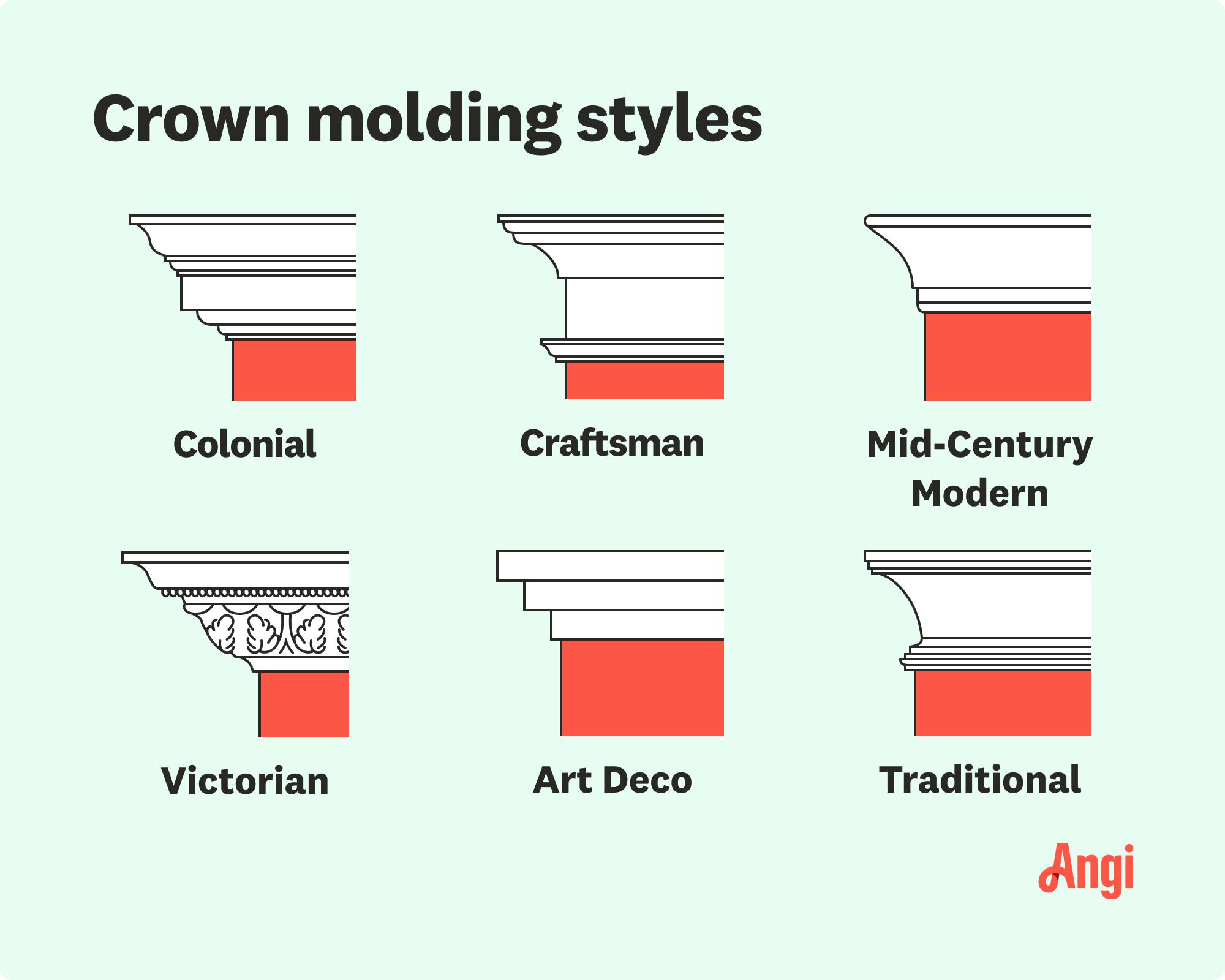
Choosing the best crown molding materials for your installation project can impact how much value it may have when it comes to cost, installation ease, and appeal. While wood is a common molding material, several others, including plaster, PVC, foam, flex, polyurethane, and MDF, also exist, and all have various application benefits.
Plaster crown molding is the most expensive option on average but often considered the most elegant. Wood is the most popular, and it comes in a wide range of price points, exceeding the cost of plaster in some applications. PVC is excellent for use in bathrooms and other potentially damp locations. You can choose to mix and match crown molding material needs with your home's other types of molding.
| Crown Molding Material | Average Cost per Linear foot |
|---|---|
| Wood | $10–$45 |
| Plaster | $9–$20 |
| PVC | $4–$8 |
| Polystyrene foam | $3.50–$8 |
| MDF | $4–$10 |

You can install your own crown molding as a DIY project. However, there are some precautions to consider. Installing the material correctly takes practice and patience. While avid DIYers with plenty of carpentry skills can accomplish the job with solid results, to get the best and most appealing results, it’s best to hire a local crown molding specialist.
Because the margin between cost and ROI is so slight with crown molding, it's important to note that subpar installations can actually hurt the selling appeal and value of the project. Additionally, installing crown molding is only valuable if your home can benefit from the look of the product. A local home remodeler can help determine if doing the job is right for your home.
Crown molding on vaulted ceilings is a popular and attractive decor option—at least for now. Housing markets and buyers' desires can change quickly from year to year. Because crown molding isn't a necessity, its existence can fall victim to, or benefit from, current buying and selling trends. If your primary goal of installing crown molding is to increase the home's resale value, pay close attention to current buyers' wants to maximize your potential.
Although some people might choose not to install crown molding, that doesn’t mean it is outdated. Interior designers still frequently use it to generate a sense of style and sophistication in a room.
People who choose to skip installing crown molding might be seeking to enhance a minimalist or contemporary design style. They can also save some money during a renovation by not installing crown molding.
Even if some designers skip crown molding, the best renovations will make use of crown molding most of the time. However, trends do change from year to year, so crown molding could become outdated at some point in the future.
The cost of your crown molding installation depends on factors including size, complexity, style, and quantity. However, estimating what the project is worth in terms of ROI can be challenging. Here are a few steps you can take to get a feel for the value of the project.
Consider market demand. Crown and other molding types and styles come and go in popularity. Understand what buyers are currently looking for in terms of interior design to estimate selling appeal.
Include crown molding in other updates. While installing crown molding on its own won't significantly increase your home's value, incorporating it into a remodel can increase the overall project value.
Balance material cost with expected value. Because crown molding has a low ROI potential, keep an eye on your remodeling budget to determine how much to spend on its installation to make it worth the investment.
If you're planning to move in the next year or two, a remodel may not be worth the time, money, and work required. However, if you plan on enjoying your home for several more years, remodeling your dream space will be well worth it.
The cost to install any trim work in your home varies widely by type, style, and other factors. For crown molding, the prices can range anywhere from around $4 to $50 per linear foot if a professional handles the project. That means that a 250-square-foot room would cost between $1,000 and $12,500 for crown molding.
Because crown molding can only increase the selling appeal of your home, its pricing is an important consideration when calculating ROI. When coupled with a living room upgrade, however, adding crown molding can finish the room off nicely and increase the value of the entire project.
Painting or staining crown molding protects it from the elements and enhances its look, so this is an important step. However, staining or painting trim during installation costs $1 to $4 per linear foot, increasing the overall cost of the project.
The best time to paint crown molding is before installing it. If it’s already installed, you may want to carefully remove crown molding—just like you’d remove baseboards—before painting or staining it.
To increase the appeal of the crown molding to potential buyers and to give it the best possible look upon installation, you should remove any texture from the walls or ceilings in the immediate area before installing it. Removing a textured coat finish allows it to sit tightly to the wall. The average cost to remove a texture coat is $1 to $2 per square foot.
There's little to go on from a monetary standpoint when deciding if crown molding is worth it for your home. As far as the resale value of the house goes, you're not likely to make money by installing crown molding.
However, that's not to say that the project isn't worth it. Crown molding installation can create a greater selling appeal for buyers and improve the appearance of your home's interior.
Additionally, if you love the look and feel of crown molding, there's simply no other way to achieve the appearance that it creates.
| Crown Molding Pros | Crown Molding Cons |
|---|---|
| Can improve interior look and feel | Has very low to no ROI value |
| Adds elegance and style | Is challenging to install |
| Can improve selling appeal | Is only DIY appropriate for those with the necessary skills |
Home is the most important place on earth, which is why Angi has helped more than 150 million homeowners transform their houses into homes they adore. To help homeowners maximize the value of their investments, we gather ROI data from reputable sources, including industry reports, real estate studies, and interviews with market experts. We calculate the average resale value for projects by multiplying the ROI against the project’s average cost according to our cost data, which is sourced from thousands of real Angi customers.
Want to help us improve our data? Send us a recent project quote or home appraisal value to [email protected]. Quotes and personal information will not be shared publicly.
From average costs to expert advice, get all the answers you need to get your job done.

Installing trim can give your home a finished, polished appearance. Learn how much it costs to install trim and what factors affect how much you’ll pay.
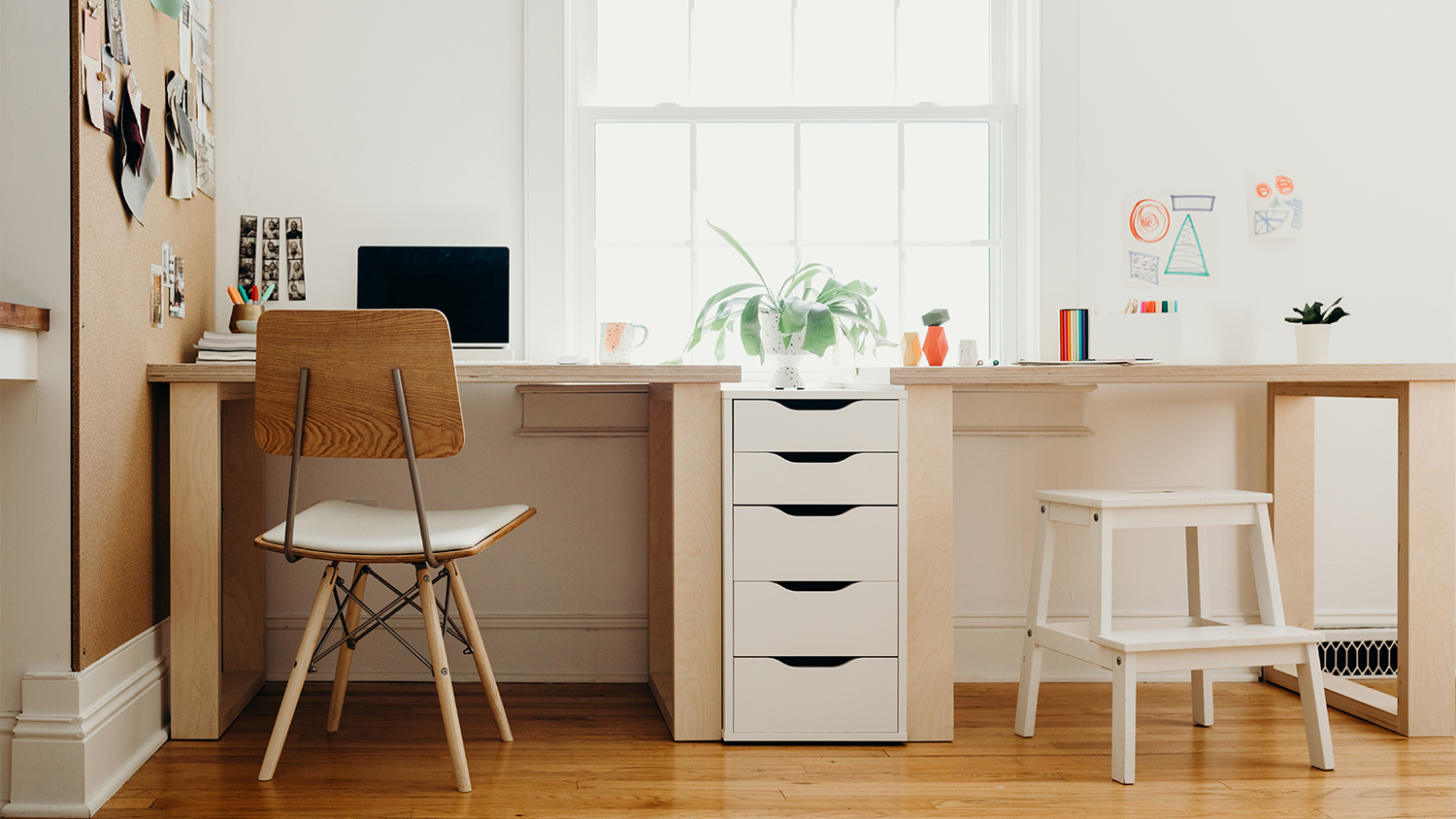
Get a clear estimate of the cost of a custom desk, including average prices, key cost factors, and tips to help you budget for your home office project.
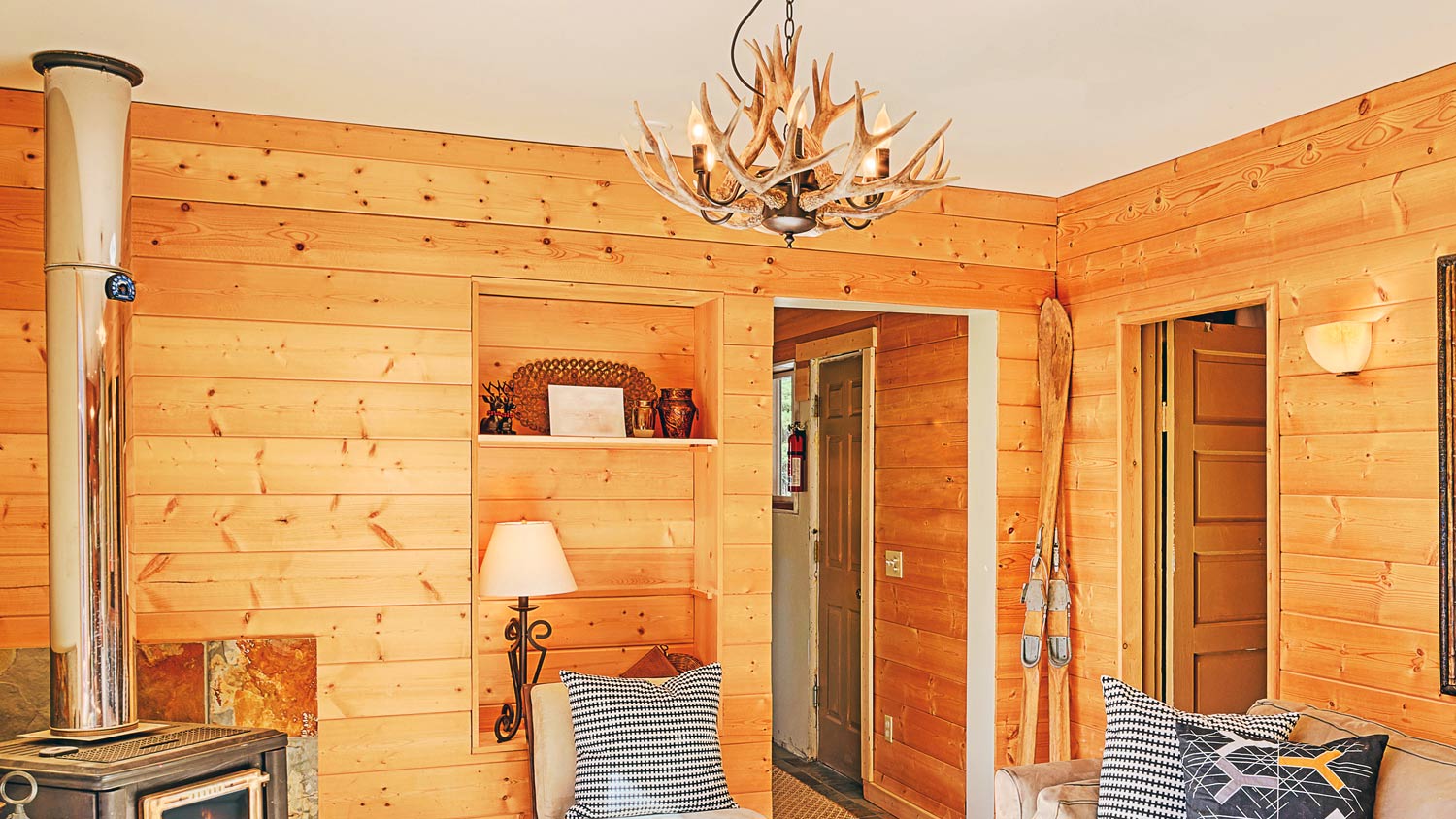
Get the facts on the cost to remove wood paneling, including average prices, key factors, and tips to help you budget your project with confidence.
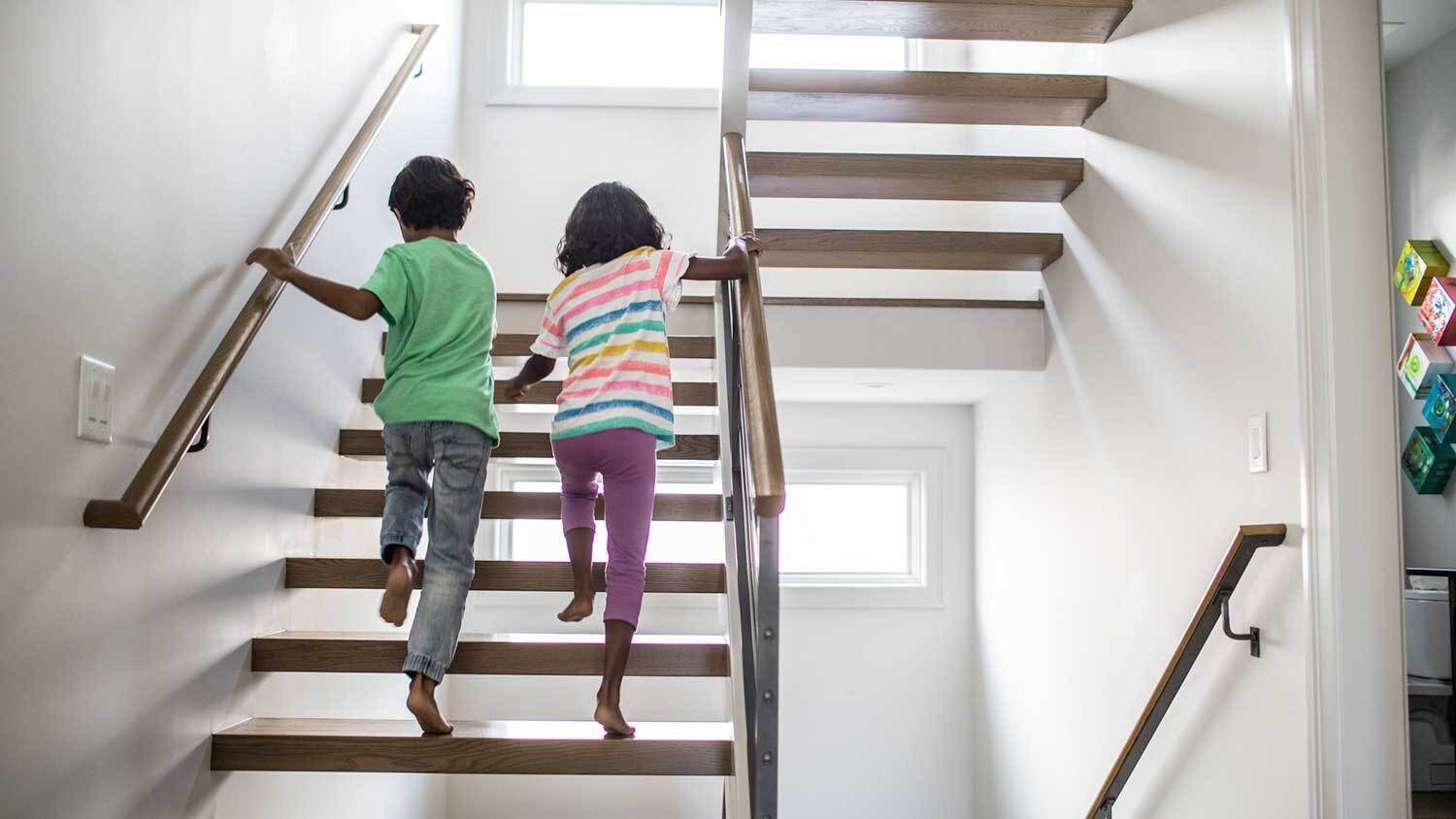
Replacing a stair railing is a surefire way to update your home’s look and improve safety. Learn how to replace a stair railing with this straightforward guide.
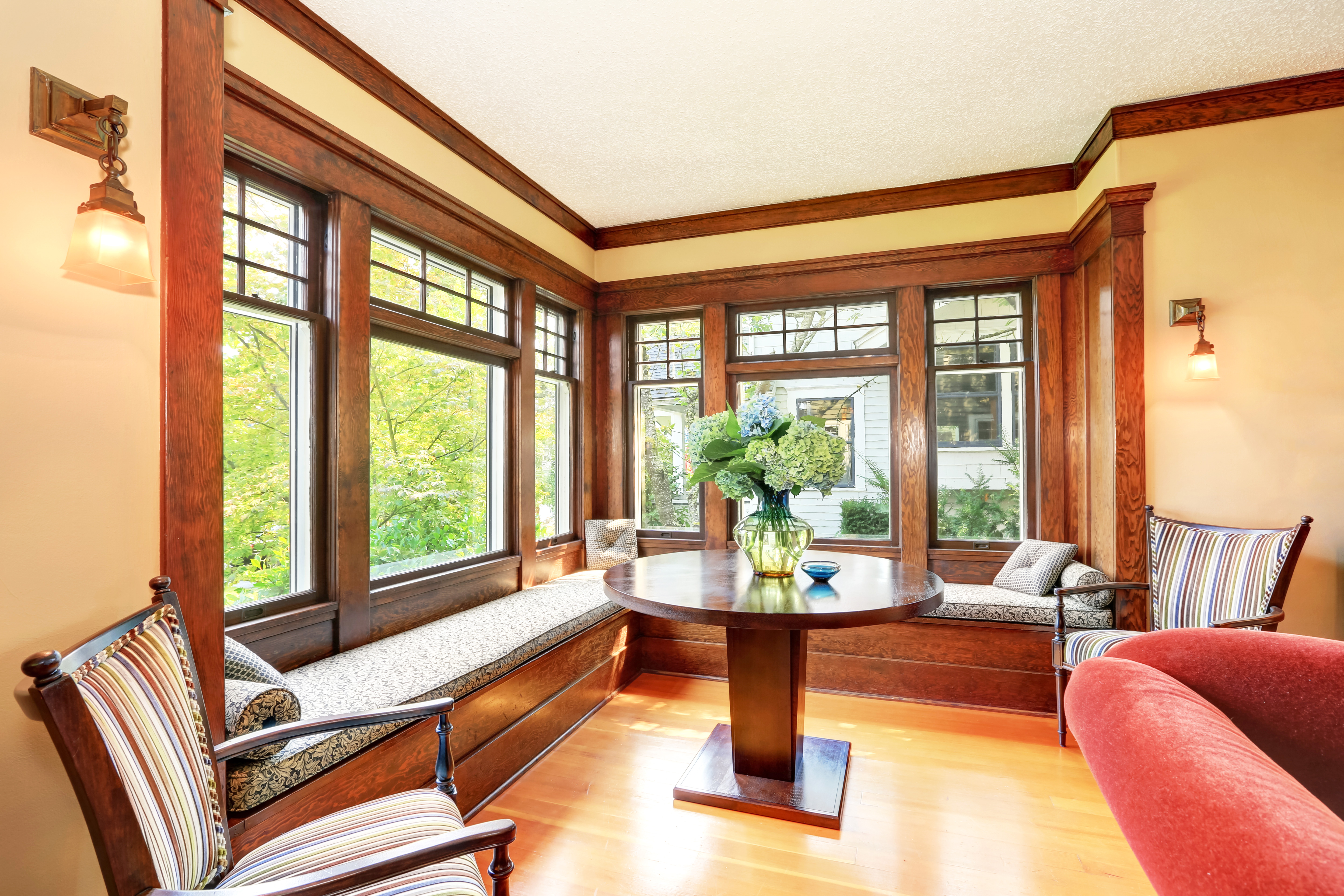
When you want maximum durability, consider selecting between PVC crown molding versus wood. PVC is moisture resistant, while wood gives you a vintage design.
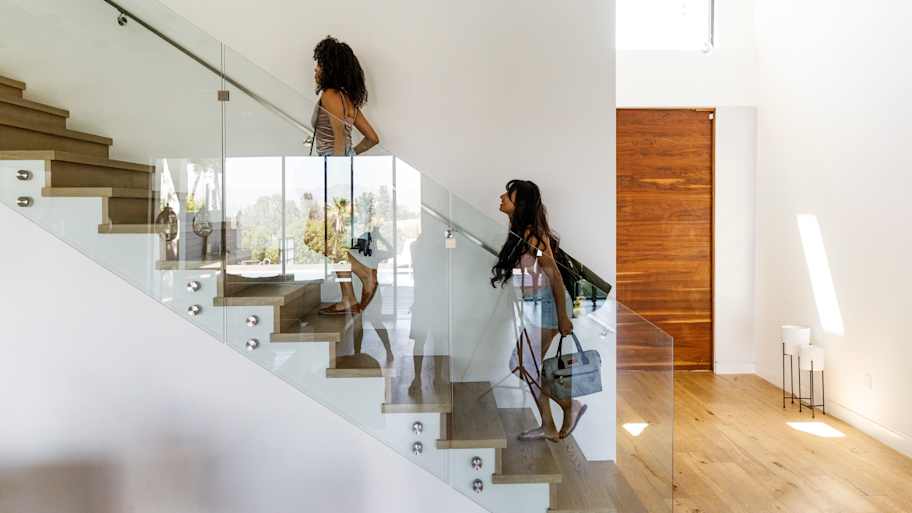
Your installed glass stair railing cost depends on factors such as materials, size, and complexity. Discover the ones that will affect yours the most.